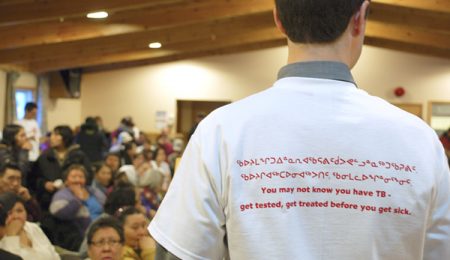WE SEE THEM every day, on street corners, in shelters, outside storefronts. Oftentimes we ignore them, only occasionally tossing change into their worn down paper cups. Homelessness is an important issue, but one that is often overlooked or ignored.
It is estimated that youth make up one-third of Canada’s homeless population, meaning close to 65,000 young people are wandering the country’s streets. Several studies conducted on homeless youth say social stigma and lack of rehabilitation resources make it more difficult for them to reintegrate into society.
The factors that lead to youth living without homes are not easily controlled. The number one reason for kids ending up on the street is in attempt to leave an abusive household. The issue then becomes the need for having comprehensive and effective rehabilitation programs for those forced to run away from home.
Operation Come Home (OCH), an Ottawa organization helping homeless youth, has been effectively rehabilitating those in need by helping them earn school credits, acquire jobs, and gain access to basic necessities—all through public funding.
But that’s not enough. Studies show if youth trying to re-enter society face barriers they cannot easily overcome—such as financial challenges, discrimination, or lack of support—it is likely they will become homeless adults who are even less likely to resume a stable, healthy lifestyle.
There is no single, unique solution for youth homelessness, but there are things that can be done to reduce it.
Municipal governments should increase funding to organizations such as Operation Come Home, allowing these groups to expand and have more reach. A report card released in 2010 by the Alliance to End Homelessness, a local organization conducting research on the issue, gave Ottawa a “C” on trying to reduce the amount of people in emergency shelters and a “D-” for shorter shelter stays. There is room for improvement in Ottawa, and as Canada’s capital city, we should be setting an example in the country instead of trailing behind.
Although funding these organizations can be costly in the short run, it makes financial sense to get youth out of shelters when we think big picture. A report titled Homelessness: Causes and Effects estimates the cost of maintaining one youth in a shelter is $30,000–40,000 annually. If someone can be successfully rehabilitated, the direct financial burden will be reduced significantly. Indirectly, the economy is better off by having another person contributing to the workforce instead of straining it.
We need to ensure resources are available to kids from troubled families, possibly preventing them from leaving home in the first place. Services like Kids Help Phone can offer advice, or if at-risk youth turn to a guidance counselor at school, a social worker can be called to evaluate their home situation.
Initiatives that centre on youth outreach and support need to be expanded and better promoted, especially through the use of Facebook and Twitter so they are more likely to reach the targeted demographic.
There are also things we can do as individuals. We can donate some leftover cash, volunteer at shelters, and—most importantly—dispel misconceptions about homelessness and spread awareness. Most of these kids aren’t young criminals. They’re just people trying to find their way out of a hard situation, and it’s time we help this segment of our future generation however we can.
editor@thefulcrum.ca | (613) 562-5261




